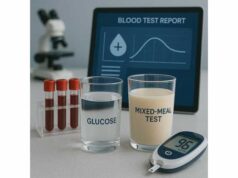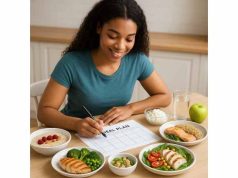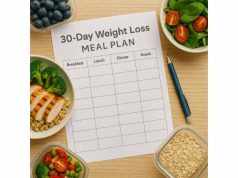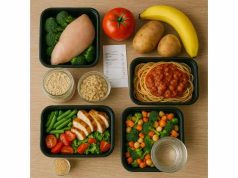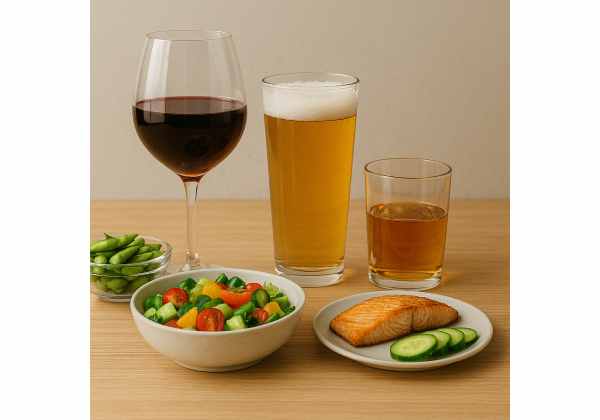
You can lose weight without quitting alcohol completely, but you need a plan. Drinks contain calories (from alcohol and sugars), lower inhibitions around food, and disrupt sleep—all of which can slow fat loss. The solution is not absolute abstinence for most adults; it is clear limits, smarter pours, and a routine that protects your deficit. This guide explains how alcohol affects weight loss, how many drinks fit your goals, and which choices keep calories low while still feeling social. If you want the bigger picture on daily targets and macro balance before you set drink limits, start with our overview of calories, macros and example meal plans. Then use the steps below to build a plan you can keep on busy weeks, dinners out, and special events.
Table of Contents
- Alcohol and weight loss: what matters
- How many drinks fit in a deficit?
- Lowest-calorie drinks and swaps
- Eat before and while drinking
- Navigate restaurants and parties
- Recovery days and progress
- Safety: who should avoid
- Frequently Asked Questions
Alcohol and weight loss: what matters
Alcohol by itself does not erase fat loss, but it raises the bar for consistency. Understanding the specific roadblocks lets you design a plan that still works.
1) Alcohol adds “silent” calories
Alcohol provides 7 calories per gram. A standard drink (about 14 g of pure alcohol) brings ~100 calories from ethanol alone, before mixers. Add sugar (juice, syrups) or fat (creamy cocktails) and totals jump fast.
Typical examples
- 12 oz regular beer (5%): ~150 calories
- 12 oz light beer (4%): ~90–110 calories
- 5 oz dry wine: ~120 calories (sweeter styles run higher)
- 1.5 oz 80-proof liquor neat: ~95–100 calories
- Gin and tonic (8–10 oz with regular tonic): ~175–200 calories
- Margarita (restaurant): ~250–400+ calories depending on syrup and size
2) Appetite and decision making
Alcohol lowers inhibitions, increases “palatable” food intake, and nudges late-night snacking. The combination—drinks plus energy-dense foods—often turns a modest treat into a maintenance-level day.
3) Sleep and recovery
Even small amounts can fragment sleep. Poor sleep shifts hunger hormones and cravings the next day, making it harder to stay within your calorie range.
4) Fat burning (short term)
Your body prioritizes clearing alcohol, so fat oxidation temporarily decreases while alcohol is in your system. Over the week, total calories and habits still decide results, but this is another reason to keep portions modest and days off alcohol purposeful.
Bottom line
You can drink and lose weight—if you set clear portions, choose lower-calorie options, and protect protein, fiber, and sleep. For pacing and safe expectations during a deficit, see our concise safe weight loss guide.
How many drinks fit in a deficit?
Start with your weekly calorie budget, then decide how much of it you are willing to spend on alcohol. A small, repeatable plan beats cycles of “perfect” weekdays and blowout weekends.
Set limits that work in real life
- Choose a cap: many adults aiming for fat loss do well at 0–4 drinks per week, occasionally up to 6 for special events. Spread them out or bunch them on one day—what matters is weekly calories and recovery.
- Know your pour: at home, measure. In bars, assume a “generous” pour (often 6–6.5 oz wine or 2 oz spirits) unless stated otherwise.
Budget the calories
- A light beer (~100), dry wine (~120), or spirit with diet soda or seltzer (~100) is easy to fit.
- Two modest drinks can cost ~220–250 calories. Decide what food you will swap or shrink to accommodate them (e.g., reduce cooking oil at dinner, skip dessert, or choose a leaner entrée).
Weekly strategies
- Alcohol-free default: stay alcohol-free Monday–Thursday. Choose up to 2–4 drinks Friday–Sunday if they fit your plan.
- Event buffer: on event days, pair drinks with a protein-and-fiber preload (details below) and cap to a predetermined number.
- Non-drinker playbook: if you are happy to skip alcohol, you will progress faster. Keep flavorful zero-proof options on hand.
For step-by-step guidance on setting a modest, hunger-friendly deficit before you allocate calories to drinks, review our practical guide to reducing hunger while cutting calories.
Lowest-calorie drinks and swaps
You do not need complex rules—just clear defaults and simple swaps. Build your “house list” and order from it.
Smart defaults (rough calories)
- Light beer (12 oz / 355 ml): 90–110
- Session IPA or lower-ABV craft (12 oz): 120–150 (check labels)
- Dry white or red wine (5 oz / 150 ml): ~120
- Brut Champagne or dry Prosecco (5 oz): 90–120
- Neat/rocks spirits (1.5 oz / 45 ml): ~95–100
- Spirit + seltzer + citrus (8–10 oz): ~100
- Sugar-free mixers (diet tonic, diet ginger ale): ~100–120 total depending on pour
High-calorie culprits to limit
- Sugary cocktails: margaritas, piña coladas, mojitos with syrup, tiki drinks (often 250–600+).
- Large pours: 9-oz wine glasses (nearly ~200+ calories).
- Craft stouts/strong ales: often 200–300+ per pint.
- Spiked coffee drinks and creamy liqueurs: calories add up fast.
Order like this
- “Gin and seltzer with lime” (not tonic unless diet).
- “Dry white wine, 5-ounce pour please.”
- “Light beer, bottle or can.”
- “Whiskey on the rocks.”
- “Aperol spritz, light on syrup” (or split one).
Zero-proof options that feel adult
- Seltzer with bitters and citrus (ask for no simple syrup).
- Non-alcoholic beers and wines (calories vary; check labels).
- Cold brew with a splash of milk and cinnamon.
If you are also working on daytime liquids and want a simple hydration framework that makes social drinks easier to budget, skim our guidance on water, coffee and tea for weight loss.
Eat before and while drinking
Hunger control is the difference between “two drinks within budget” and “two drinks plus 1,000 calories of snacks.” Use food as a tool, not an afterthought.
Pre-drinking preload (60–90 minutes before)
- Protein: 25–40 g (Greek yogurt, eggs, chicken, tofu, tempeh).
- Fiber + volume: fruit, vegetables, beans, or intact grains.
- Fluids: a large glass of water (250–500 ml).
Easy preloads
- Greek yogurt (200–250 g) with berries and chia.
- Chicken or tofu bowl with vegetables and a small portion of rice or potatoes.
- Hummus with raw vegetables and a hard-boiled egg.
While drinking
- Alternate drinks with water or seltzer.
- Order a vegetable-forward side early (salad, grilled vegetables).
- Choose lean proteins (grilled fish or chicken) if you are also eating a meal.
- Measure dips and oils—ask for dressings on the side.
For quick protein choices and serving sizes to plug into your preload, keep our practical high-protein foods list handy.
Navigate restaurants and parties
Social plans can fit your goals with one or two decisions made in advance.
Before you go
- Decide your drink cap and order of operations: water first, drink second, food third.
- Scan the menu online. Pick two entrées you would be happy with (lean protein + vegetables; starch in a measured portion).
At the table or bar
- Start with seltzer and citrus, then switch to your drink.
- If ordering wine, ask for a 5-oz pour or choose a split (187 ml).
- Share sides and desserts; skip the second basket of fried appetizers.
Buffets and parties
- Make one plate, big on protein and vegetables.
- Keep your drink in your non-dominant hand (slows sipping).
- Stand away from the food table to reduce grazing.
Travel nights
- Prioritize hotel or nearby options with simple grilled entrées and vegetables.
- If breakfast is included, plan a protein-forward plate to steady the day after drinks.
When portions are unpredictable, the plate method keeps you within range. For a visual refresher, see our guide to portion sizes using the plate method.
Recovery days and progress
A night with drinks does not require punishment. It needs structure that protects momentum.
The morning after
- Hydrate early: water plus electrolytes if needed.
- Protein-first breakfast: 25–40 g with produce (yogurt bowl; eggs and fruit).
- Move gently: a 20–40 minute walk improves mood and appetite control.
Scale expectations
- Expect a 1–2 day water bump from alcohol and salty foods. Watch weekly averages and waist measurements instead of day-after numbers.
Course correction (without over-restriction)
- Trim liquid calories and extra fats for the next 1–2 days.
- Keep fiber high (beans, lentils, vegetables, intact grains).
- Resume normal training; do not “sweat it off” with an extreme workout.
If weekends keep stalling progress
- Shift to a two-drink maximum on one night only.
- Schedule a protein-and-vegetable lunch on social days.
- Audit “hidden calories” in mixers and late-night snacks.
If plateaus persist despite reasonable limits, review our checklist of common diet mistakes that stall loss and adjust the highest-impact items first.
Safety: who should avoid
Alcohol is not appropriate for everyone. Choose abstinence or seek medical guidance if any of the following apply:
- You are pregnant, trying to conceive, or breastfeeding.
- You have a history of alcohol use disorder or are concerned about control.
- You take medications that interact with alcohol (sedatives, certain pain medications, some diabetes drugs—ask your clinician).
- You have liver disease, pancreatitis, uncontrolled hypertension, or other conditions where alcohol is contraindicated.
- You notice alcohol consistently triggers binge eating, poor sleep, or depressed mood.
Remember: “moderate drinking” is not a requirement for health or social connection. Many people feel and perform better without alcohol. Choose the path that supports your long-term goals and well-being.
Frequently Asked Questions
Does alcohol stop fat loss?
Not outright, but it adds calories, lowers inhibitions, and temporarily reduces fat burning while your body metabolizes alcohol. Over a week, total calories, protein, fiber, activity, and sleep still drive results. Keep drinks modest and plan food to protect your deficit.
What are the best drinks for weight loss?
Choose light beer, dry wine (5 oz), or spirits with seltzer and citrus. These are typically ~90–130 calories each. Avoid sugary cocktails and oversized wine pours, which can double or triple calories without adding fullness.
How many drinks can I have per week and still lose weight?
Many adults progress with 0–4 drinks per week, occasionally up to 6 during events, if weekly calories remain in deficit. Spread drinks out or budget them for one night, but protect sleep and next-day routines to maintain momentum.
Why does my weight spike after drinking?
Alcohol and salty foods cause water retention and sometimes later-than-usual bowel movements. The scale may jump for 1–2 days even if fat did not increase. Track weekly averages and waist trends instead of reacting to day-after numbers.
Is wine better than beer for weight loss?
Neither is inherently “better.” Portion and sweetness matter most. A 5-oz dry wine (~120 calories) and a 12-oz light beer (~100–110) are both manageable; high-ABV beers and sweet wines add more calories quickly.
How can I avoid overeating when I drink?
Preload with protein and fiber 60–90 minutes before, alternate drinks with water, order a vegetable side early, and decide your drink cap in advance. Keep mixers sugar-free and measure oils, dressings, and dips if you are also dining out.
References
- What Is A Standard Drink? 2024.
- The effect of alcohol consumption on food energy intake: a systematic review and meta-analysis. 2019 (Systematic Review).
- Effects of alcohol on sleep and nocturnal heart rate: Relationships to intoxication and morning‐after effects 2022.
- Ethanol causes acute inhibition of carbohydrate, fat, and protein oxidation and insulin resistance. 1988.
Disclaimer
This article is for general education and is not a substitute for professional medical advice, diagnosis, or treatment. Avoid alcohol if you are pregnant, trying to conceive, breastfeeding, under the legal drinking age, have alcohol use disorder, or if your clinician advises against it due to medications or medical conditions.
If this guide helped you, please share it with someone navigating social plans while losing weight, and consider following us on Facebook, X, or whichever network you use for calm, practical nutrition advice and weekly menu ideas.

